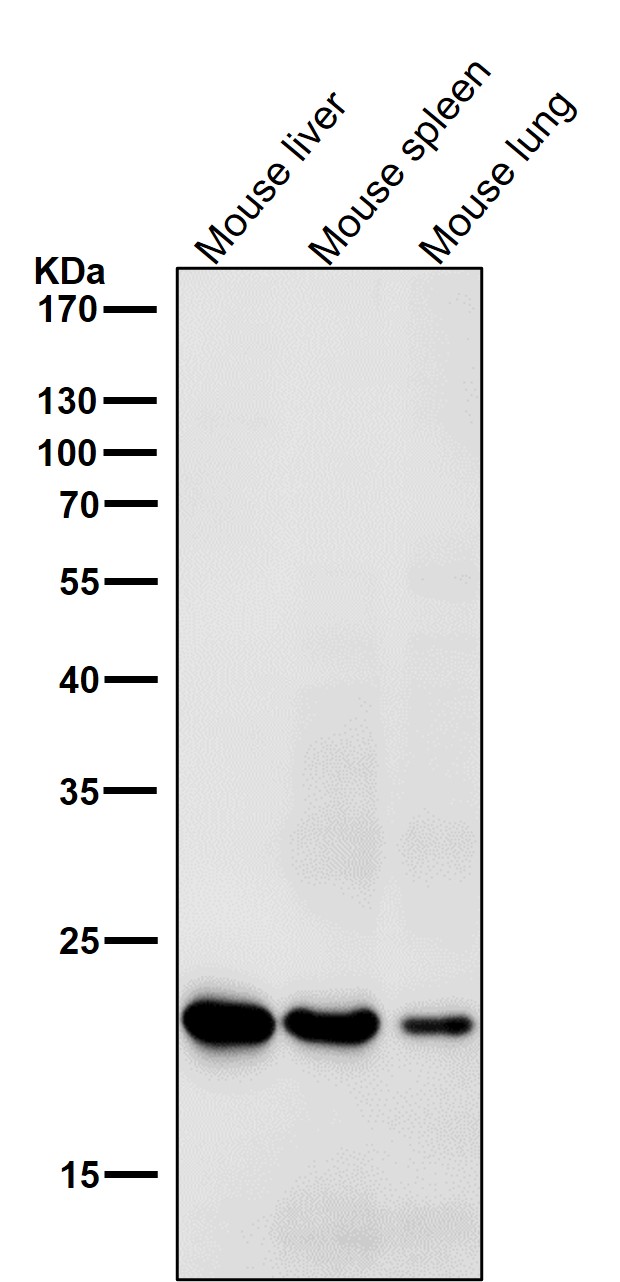
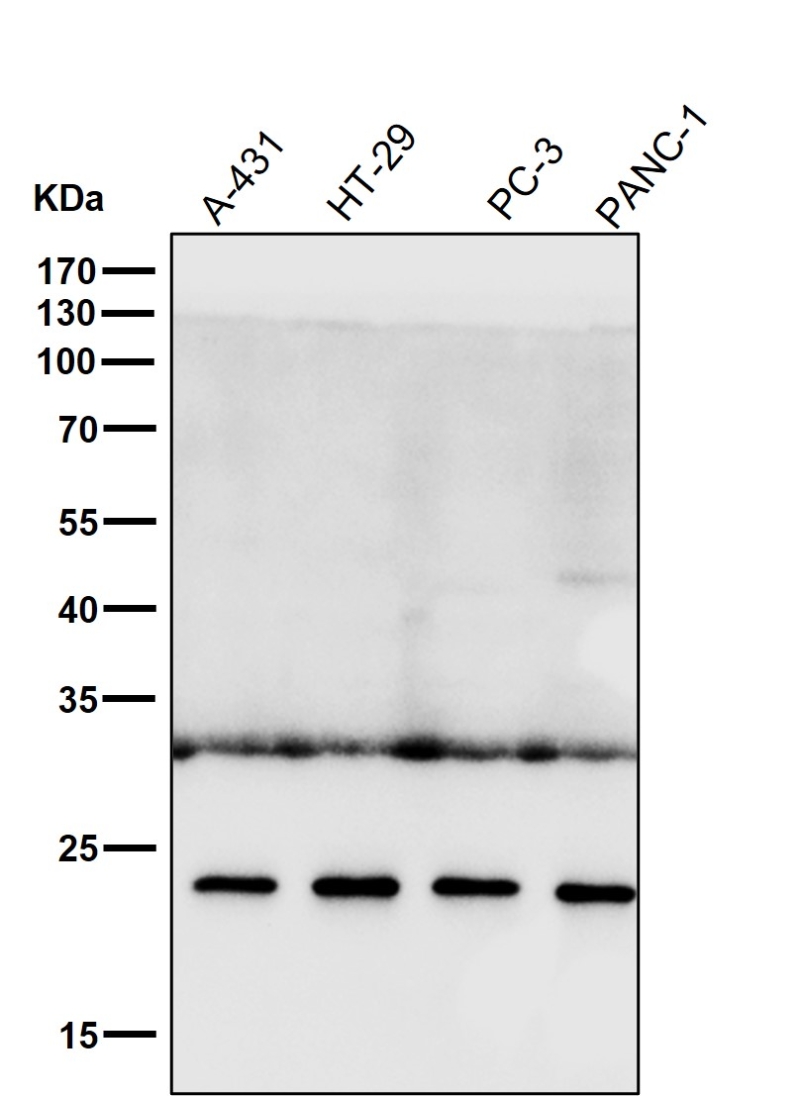
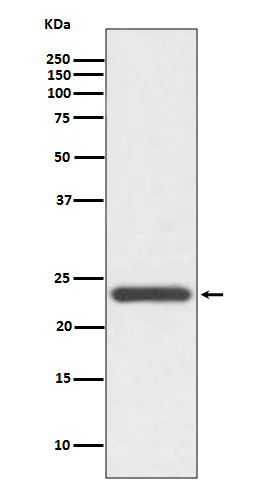
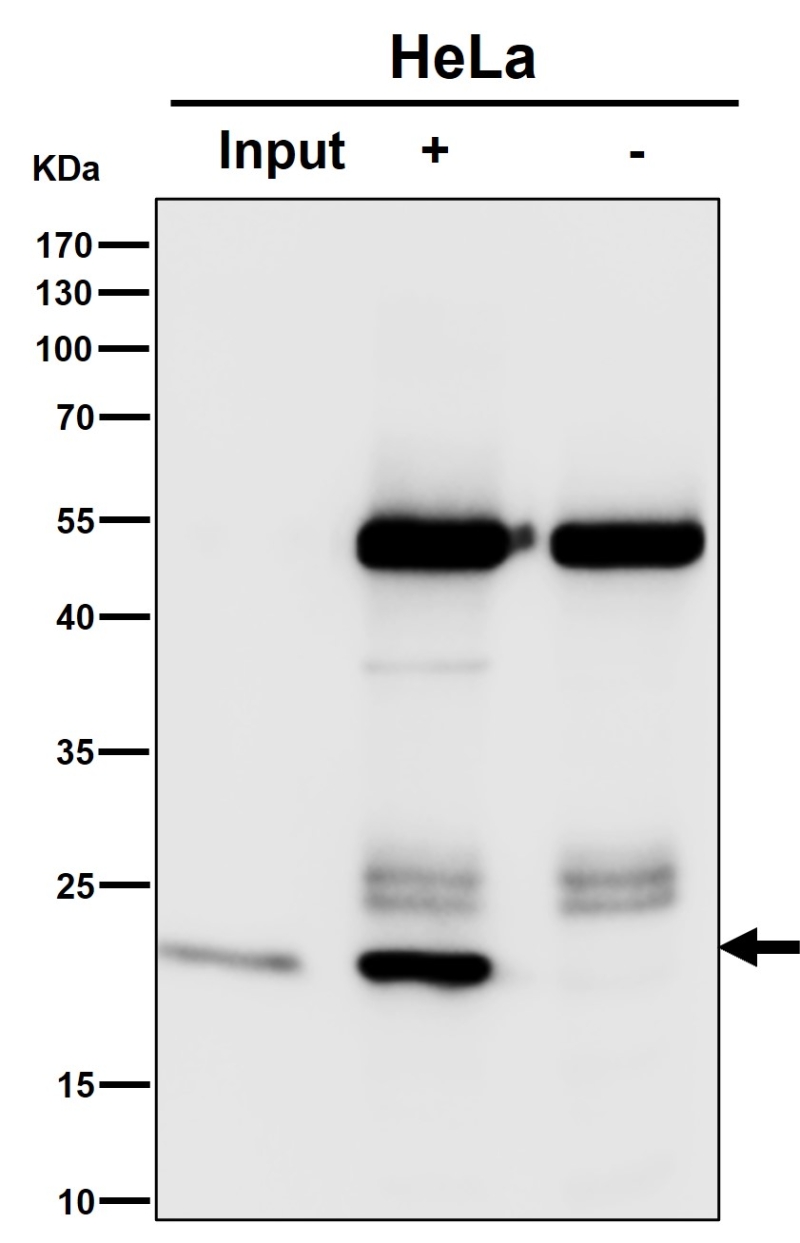
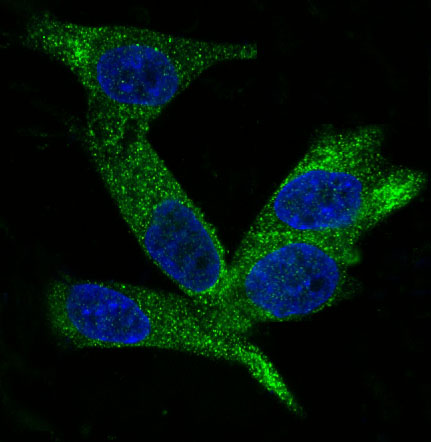

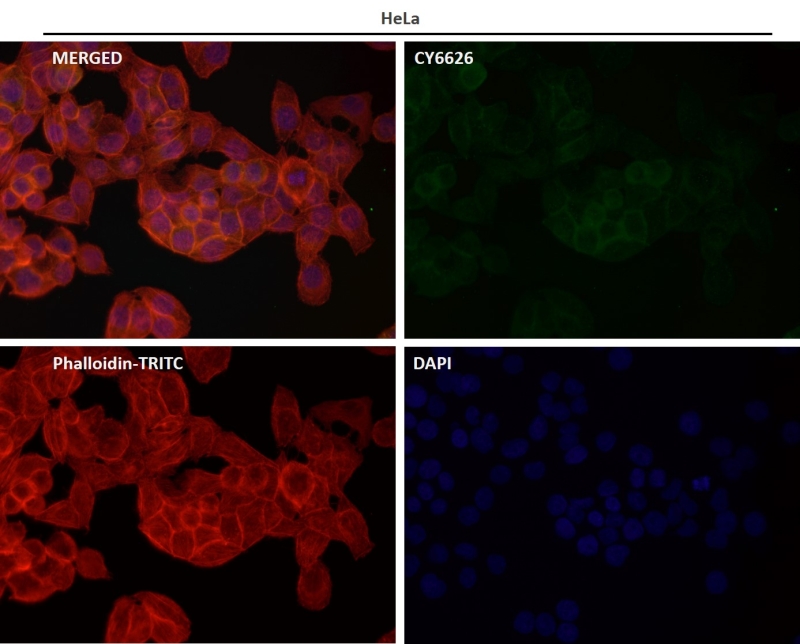
| WB | 咨询技术 | Human,Mouse,Rat |
| IF | 1/20-1/50 | Human,Mouse,Rat |
| IHC | 咨询技术 | Human,Mouse,Rat |
| ICC | 1/50-1/200 | Human,Mouse,Rat |
| FCM | 1/20-1/100 | Human,Mouse,Rat |
| Elisa | 咨询技术 | Human,Mouse,Rat |
| Aliases | WFDC2; Epididymis-specific he4; Epididymal protein 4; DJ461P17.6; EDDM4; HE4; WAP5;;WFDC2 |
| WB Predicted band size | Calculated MW: 13 kDa ; Observed MW: 23 kDa |
| Host/Isotype | Rabbit IgG |
| Antibody Type | Primary antibody |
| Storage | Store at 4°C short term. Aliquot and store at -20°C long term. Avoid freeze/thaw cycles. |
| Species Reactivity | Human,Mouse |
| Immunogen | A synthesized peptide derived from human WFDC2 |
| Formulation | Purified antibody in PBS with 0.05% sodium azide,0.05% BSA and 50% glycerol. |
+ +
以下是关于HE4抗体的3篇参考文献及其摘要概括:
1. **文献名称**:*HE4 as a biomarker for ovarian and endometrial cancer management*
**作者**:Galgano, M.T., et al.
**摘要**:该研究综述了HE4蛋白作为卵巢癌及子宫内膜癌生物标志物的临床价值,探讨了HE4抗体的检测方法及其在疾病诊断和预后评估中的应用,强调其相较于传统标志物CA125的特异性和敏感性优势。
2. **文献名称**:*Development of a monoclonal antibody-based immunoassay for HE4 protein detection*
**作者**:Schummer, M., et al.
**摘要**:研究团队成功开发了一种针对HE4蛋白的单克隆抗体,并建立了高灵敏度的ELISA检测方法。实验验证显示该抗体对HE4具有高亲和力和特异性,适用于血清样本中HE4的定量分析。
3. **文献名称**:*Comparative evaluation of HE4 expression in ovarian tumors using immunohistochemistry*
**作者**:Karlsen, M.A., et al.
**摘要**:通过免疫组化技术,对比分析了HE4抗体在不同卵巢肿瘤组织中的表达水平。结果显示HE4在浆液性癌中高表达,而在良性肿瘤中表达较低,支持其作为鉴别诊断工具的潜力。
4. **文献名称**:*HE4-targeted antibody-drug conjugates for ovarian cancer therapy*
**作者**:Wang, L., et al.
**摘要**:研究探索了靶向HE4的抗体药物偶联物(ADC)在卵巢癌治疗中的应用。实验表明,该抗体能特异性结合肿瘤细胞并递送细胞毒性药物,在小鼠模型中显著抑制肿瘤生长,提示其临床转化前景。
(注:以上文献信息为示例性质,实际引用时建议通过学术数据库核对具体细节。)
**Background of HE4 Antibody**
The HE4 (Human Epididymis Protein 4) antibody targets the HE4 protein, encoded by the *WFDC2* gene, initially identified in the epididymal epithelium. HE4 belongs to the whey acidic protein (WAP) family and functions as a protease inhibitor. Its clinical significance emerged when studies revealed overexpression in epithelial ovarian cancer (EOC), positioning it as a promising biomarker. Unlike CA125. a traditional ovarian cancer marker, HE4 demonstrates higher specificity for EOC, particularly in early-stage and non-mucinous subtypes, reducing false-positive rates in differential diagnosis.
HE4 antibodies are integral to diagnostic immunoassays (e.g., ELISA, chemiluminescence) that quantify serum HE4 levels, aiding in ovarian cancer detection, monitoring recurrence, and predicting prognosis. They are also used in immunohistochemistry (IHC) to localize HE4 expression in tissue samples. Additionally, HE4 antibodies have therapeutic potential, with research exploring their role in targeted drug delivery or immunotherapies.
Recent studies highlight HE4's involvement in tumor progression, influencing cell proliferation, adhesion, and metastasis, though mechanisms remain under investigation. Despite its primary association with ovarian cancer, HE4 is also elevated in endometrial, lung, and breast cancers, broadening its diagnostic utility. Commercial HE4 antibody-based tests, often combined with CA125. enhance diagnostic accuracy in algorithms like ROMA (Risk of Ovarian Malignancy Algorithm). Ongoing research aims to optimize HE4 antibody applications in personalized oncology and early cancer detection.
×